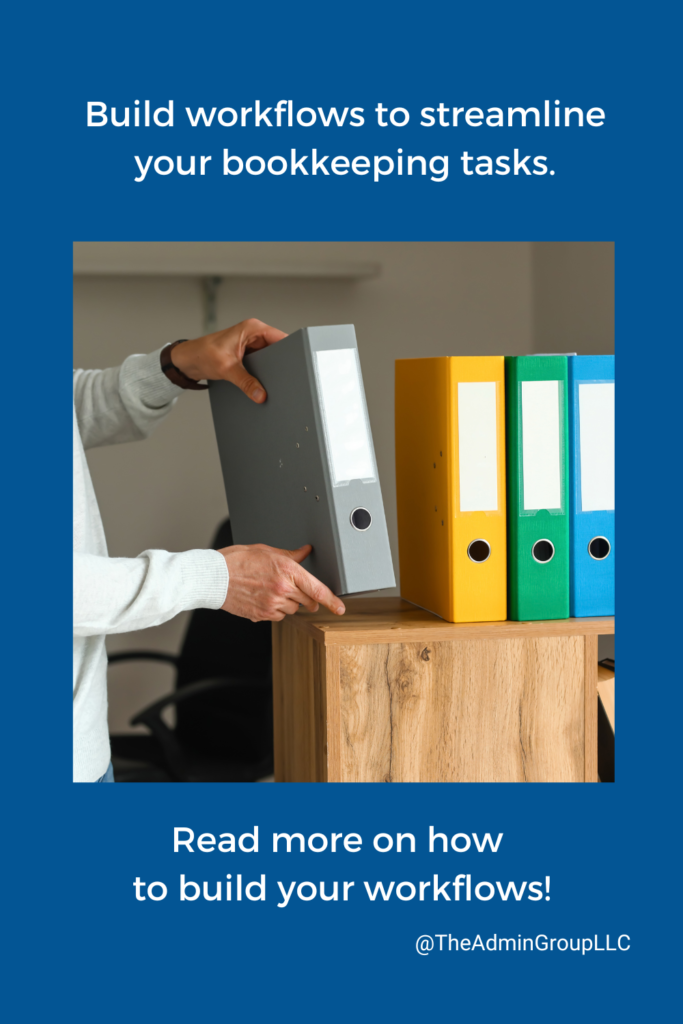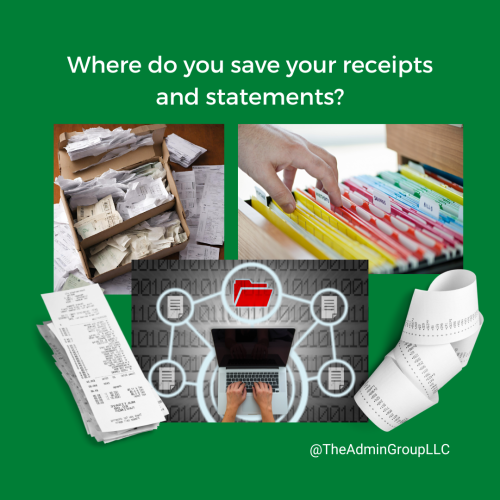Add Your Heading Text HereCreating a Bookkeeping Routine Part 2:
Your Workflow

Having a bookkeeping routine is such a vital part of being a business owner. This routine will look different from business to business, and how complex it gets will also depend on both the industry you are in and the size of your business. This series of posts is intended for service-based businesses that have few to no employees.
In Part 1 we’ll discuss your systems
In Part 2 we’ll discuss your workflow
In Part 3 we’ll cover working with a bookkeeper
Once you have determined where you’ll track your money (whether on a cloud-based platform or in Excel or Google Sheets) and have decided where you’ll store things like receipts and statements, it is time to build your workflows and create a bookkeeping routine.
- On the go:
- Place items in your “items to file” folder.
- For me, I have a basket on my desk to toss paper receipts and documents. There’s also a folder in my inbox called, “receipts to file”
- For those that prefer to fully file documents as you get them, you are annoyingly amazing. And I say that with all the love. Keep doing what you are doing and skip ahead to the parts that apply to you.
- Place items in your “items to file” folder.
- Bimonthly or Monthly:
- Organize all your files. If you have a lot, or prefer to do this in very short work sessions, then do this bimonthly. If you prefer to batch work, or don’t have significant volume, then it’s ok to do this monthly.
- Any bills that aren’t on autopay – get them paid!
- Check accounts receivable – This is what you’ve invoiced your clients/customers for. Have all your clients paid their invoices? If not, then send out their reminders!
- Monthly:
- Organize your bank statements
- Yes, banks all offer e-statements now that are easy to retrieve, but we still recommend downloading and saving them outside of online banking. Most do not keep statements available past 2 years and oftentimes charge if you ever need older statements retrieved. So start a routine now of keeping your own copy of them
- Update your bookkeeping file
- Whether you use an accounting platform or keep it simple with a spreadsheet, you should be going through this file each month to categorize your transactions, make sure the file balances against your bank/credit card accounts, and do an overall review of your income and expenses
- Organize your bank statements

Keeping up with this or a similar routine will help you stay organized, aware of the financial health of your business, and ready for tax season when it hits. If a checklist to help you keep up with a new bookkeeping routine is more your style you can receive a free checklist here.
BONUS TIP: Struggling to organize your digital files? Here’s a sneakpeack of how we store our receipts and documents:
- 📁Financials > 📁Year > 📁Month > 📃Receipt OR 📃 Statement
- We change the Receipt name to the merchant name
- We change the Statement name for something like this “01 January BANK NAME”
Thinking of working with a bookkeeper? Read Part 3 next!
